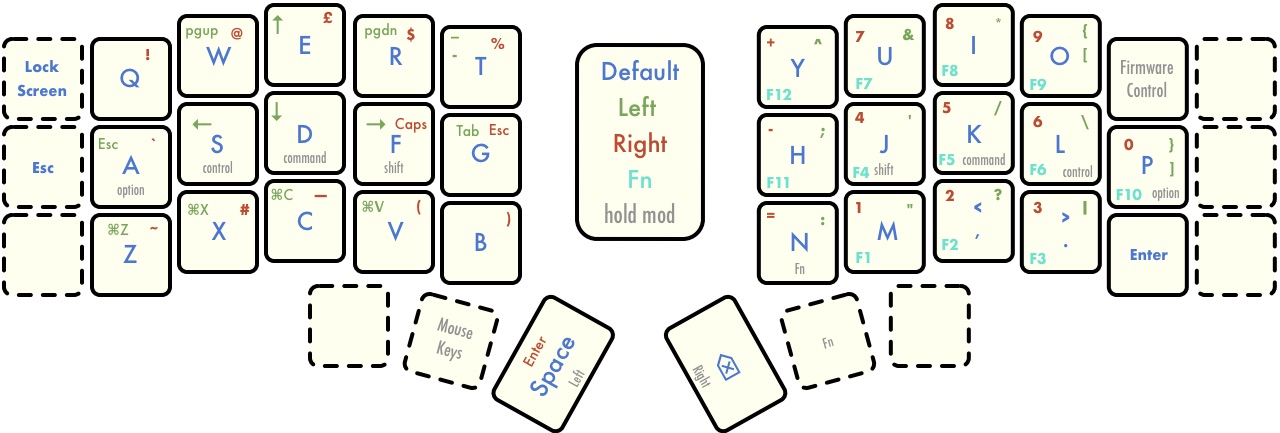Effin' Keys
I’ve been an Emacs user for a quarter of a century. One of several derivations of the name is Escape Meta Alt Control Shift, due to the heavy use of modifiers and prefix keys, which makes it a great fit for my home row mods layout.
However, I’ve recently found myself spending more time in Visual Studio Code, which follows a different set of conventions. I could reconfigure it to be more Emacs-like, but these days I like to stick with defaults where I can to avoid having to maintain complex setups. In this case, the conventions tend to match those of the OS for the most part, but the debugger in particular uses the function keys (F1-F12). These were not supported on the previous iteration of my layout, so I set about adding them.
The change is relatively straightforward — an additional layer, activated by holding down a modifier key, that exposes the function keys on the right hand half of the keyboard, largely following the numeric keypad layout. One interesting point is where to put that modifier key. I ended up putting it in two places — on the second right hand thumb key, and as a hold modifier on the N key. The latter is needed for the Manta, which only has one key for each thumb, but I added it everywhere for consistency.

I’m not 100% sure about using the N key as a hold modifier, but in early use it seems to work well. If you want to take inspiration from the change, the updates are in the Github repos: